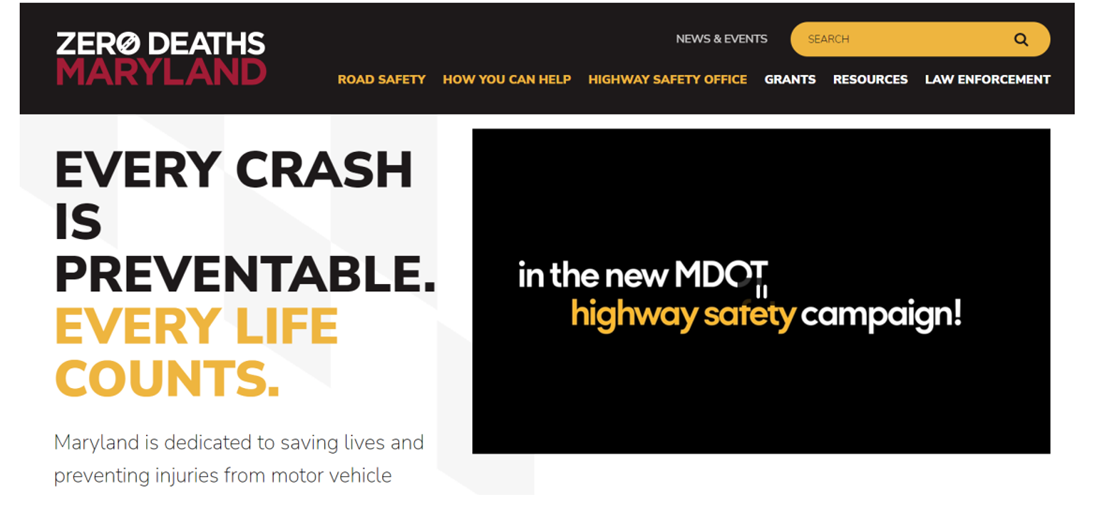On November 16, 2022, safety officials from the District Department of Transportation (DDOT), Maryland Department of Transportation (MDOT), and Virginia Department of Transportation (VDOT) briefed the TPB on their efforts to improve regional roadway safety. The roundtable was held in conjunction with the TPB’s November review of draft U.S. DOT-required highway and transit safety targets.
In addition to the presentations, board members engaged in discussion with the speakers on data, outreach, and specific strategies, reflecting safety’s status as a top goal of the TPB. As a result of this discussion, TPB's regional approach to and support for programs that reduce injuries and fatalities was emphasized in a December 2022 Virginia Mercury op-ed by TPB Chair Pamela Sebesky.
The work session recording and presentation materials are available on the Safety Roundtable page.
The following are highlights of each regional jurisdiction’s current safety initiatives:
District of Columbia
Christine Mayeur, DDOT Transportation Specialist, and Charlie Willson, DDOT Vision Zero Analyst presented on the District of Columbia’s Vision Zero strategy. Traffic fatalities within D.C. have risen during the coronavirus pandemic with crashes becoming more severe. DDOT is applying the U.S. DOT Safe Systems approach and emphasizing five focus areas: safe streets, safe speeds, safe people, safe vehicles, and post-crash care.
Specific strategies adopted by DC to address the focus areas include designing streets to reduce conflict between users, having the roadway design speed equal to the speed limit, lowering the default speed city-wide to 20 miles per hour on roads classified as ‘local’, employing automated traffic enforcement, and bolstering education and outreach efforts. DDOT has emphasized training for drivers of large commercial vehicles and participates in the regional Street Smart campaign with emphasis on driver responsibility.

(District DOT)
Maryland
Myra Wieman, Maryland Highway Safety Office (MHSO) Deputy Director, and Douglas Mowbray, MHSO Traffic Records Program Manager, shared MDOT’s safety strategy and recent safety outcomes. MDOT is building partnerships to reduce the number of fatalities and serious injuries on Maryland roadways. Maryland’s approach relies on specific strategies that support the four “E’s”: engineering, education, enforcement, and emergency medical services (EMS). From 2017 to 2021, motorist impairment, speed, and unrestrained occupants were the factors most associated with fatal crashes in Maryland. On a positive note, Maryland DOT reports that seatbelt use has increased to 92.7 percent statewide.
In addition to motorist-related enforcement and education, the Maryland State Highway Administration has been working on developing a pedestrian safety action plan. The Zero Deaths Maryland website includes resources, statistics, news, and grant information for professionals and the public.

(Maryland DOT)
Virginia
Stephen Read, VDOT Highway Safety Planning Manager, shared Virginia’s safety approach as outlined in its new Strategic Highway Safety Plan and discussed current safety initiatives. In Virginia, traffic deaths have continued to increase since an all-time low in 2014. Serious injuries also appear to be plateauing rather than decreasing as in past years.
VDOT initiatives include investing in safety-related infrastructure and behavioral projects and programs, such as implementing low-cost countermeasures and providing technical assistance to local agencies that are installing safety countermeasures shown in the following slide. Virginia has launched an effort in partnership with the Virginia Department of Health to encourage collaboration between the health and planning/engineering communities to improve safety outcomes across the Commonwealth. As a resource, VDOT has a dashboard with high-level fatality and serious injuries data, as well as a tool for jurisdictions to view data at the jurisdiction level.

(Virginia DOT)
Visit TPB's Roadway Safety page for more information and resources related to safety initiatives for the region.